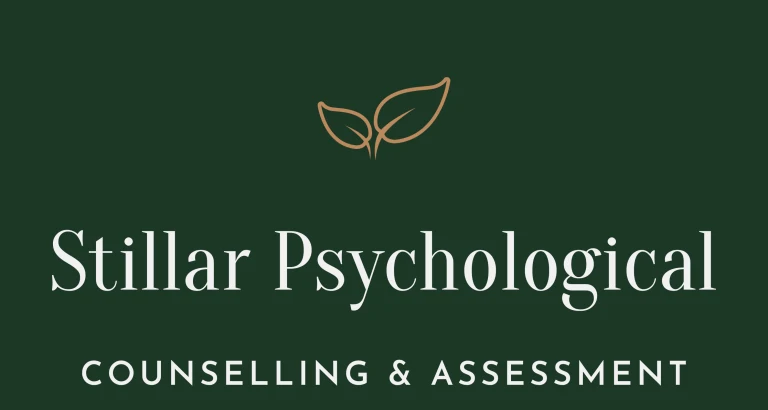Attachment theory is a popular framework for understanding how we tend to relate to ourselves and others. You may have already come across this model yourself. Perhaps you were encouraged to facilitate a “secure attachment” within your child, or to consider how your “attachment style” influences your romantic relationships and friendships. But what do these terms mean, and how can attachment be used to strengthen our bonds with others?
Attachment Theory
Attachment theory traces its roots back to British psychologist John Bowlby, who emphasized the importance of children’s early experiences with caregivers. According to Bowlby, our early interactions provide us with vital information about the dependability and responsiveness of others when we’re feeling scared, hurt or upset. Over time, we begin to internalize this knowledge, developing what Bowlby referred to as “internal working models”. These models help us to make sense of the world – informing how worthy we feel of receiving support, and how reliably we expect it to be provided.
Mary Ainsworth built on Bowlby’s work, developing the Strange Situation task as a way of seeing attachment behaviour in action. Young children were observed across a variety of scenarios in which they were separated from and reunited with their mother. Ainsworth and her team paid careful attention to childrens’ levels of distress when separated, how comforted they were when their mother returned, and how willing they were to explore their environment when their mother was present. Distinct behaviour patterns emerged from these observations, providing a classification system known as “attachment styles.”
Attachment Styles
Think about a location that you visit often, such as work or the grocery store. You probably take the same route each time automatically. You might even arrive at your destination without giving too much thought to your trip at all, as if you were on autopilot. The same is true with attachment styles – they provide us with a general roadmap for navigating relationships, even though we’re not often conscious of it. Thanks to the work of numerous psychologists who expanded on the work of Bowlby and Ainsworth, we know that there are four distinct attachment styles:
Secure
Parents of securely attached children provide sensitive and responsive care. These children tend to be happy, confident, and resilient. They are usually comfortable being independent, and believe that they will reliably receive care and support from others. These children may become upset when separated from parents and caregivers, but are easily soothed when reunited.
Adults with this relationship style generally have a strong sense of self-worth. They are comfortable forming close and intimate relationships with others, and see these bonds as important. They are comfortable providing and receiving support, and set healthy emotional boundaries.
Dismissive / Avoidant
If parents are less attuned to the needs of their children, a dismissive attachment style may form. These children view their attempts to seek comfort as generally unsuccessful, and become self-sufficient as a result. They are often more interested in their environment than their caregivers. They are also less likely to become distressed in the absence of a parent or caregiver, and less likely to display an emotional response when reunited.
Adults with a dismissive attachment style may be fiercely independent, and uncomfortable with the idea of relying on others. They tend to downplay the importance of relationships, and are wary of vulnerability. They may withdraw as relationships become more intimate, perceiving emotional closeness to be stifling and encroaching on their autonomy.
Preoccupied / Anxious / Ambivalent
Parents of preoccupied children may have provided care in a way that felt inconsistent; sometimes sensitive and responsive and sometimes unavailable or distant. These children become anxious that their needs will not be met, and tend to be less comfortable being on their own. They are often distressed by the idea of separation, and may ask a lot of questions about where the caregiver will be and when they will return. Even when reunited, these children may be difficult to fully console.
As adults, these individuals often struggle with self-esteem, relying predominantly on others for their sense of self-worth. However, they may have difficulty trusting that others truly value them, requiring frequent reassurance as a result. These individuals feel a deep need for intimacy and closeness, and relationships often become the focal point in their lives. They often struggle to set emotional boundaries, and may be considered by others to be “needy” or “clingy.”
Disorganized
A disorganized attachment style may form if parents are a source of both love and fear. These children often have difficulty communicating their needs to others, and may appear disoriented, apprehensive, or confused in the presence of a caregiver. They are easily upset and frequently have behavioural concerns.
Disorganized adults often have difficulty trusting others, and may not see themselves as being worthy of a caring relationship. These individuals have often not learned to self-sooth, leading to high levels of emotionality and explosive behaviour. They may behave inconsistently within relationships, oscillating between extremely positive and negative feelings.
Cultivating a Secure Attachment Style
Fortunately, just like the route we take to work, attachment styles can be changed. However, it does take mindful and intentional effort to make sure we don’t go back on autopilot. Here are some tips that might help you navigate your new course:
Strategies for parents
- Be present and attuned to your child’s needs. It’s not possible to be perfectly attuned all of the time (don’t worry, they aren’t keeping score!), but your child should feel confident that you’ll usually be available to provide support when needed. When there are missteps, take time to speak to your child and repair any hurt feelings.
- Honour your child’s desire for exploration. While it can be tempting to keep children close at all times, this can send the message that the world is dangerous and threatening, curbing their autonomy.
- Honour your child’s desire for comfort. This can seem counterintuitive, as there is a common belief that children must be encouraged to deal with distress on their own in order to become independent. However, when children feel safe and supported, independence and exploration develops naturally.
- Be responsive to major life transitions and events (e.g., divorce, death of a grandparent, moving to a new city, etc.) Attachment styles may be impacted by these kinds of events, requiring extra support and sensitivity.
- Take care of your own needs. Being attentive to another human being is hard work, and it’s important to take time and recharge. Remember, you can’t pour from an empty cup!
Strategies for adults
- Bring gentle, non-judgemental awareness to patterns within your relationships. Avoid blaming yourself or caregivers for insecure attachment styles – we’re all just navigating our own attachment styles and attachment histories the best that we can.
- Cultivate relationships (romantic and platonic) with people who have a secure relationship style. This can help you to feel worthy of love, become comfortable with vulnerability and learn healthy emotional boundaries.
- Pay attention to your verbal and non-verbal communication. Practice direct and assertive communication of one’s feelings and needs.
- Develop self-compassion. If your internal dialogue sounds critical or uses a harsh tone, shift to a voice that sounds warm and understanding. You may find it helpful to imagine how you would speak to a friend who was feeling sad or upset. Over time this can help to build self-esteem, making you feel more worthy of receiving support from others.
- If you’re having trouble making sense of your attachment style or how to create change, consider exploring your attachment history with the help of a registered mental health professional.
If you are interested in learning more about attachment, you may find the following books helpful:
Raising a secure child by Hoffman, Cooper & Powell
Parenting from the inside out by Siegel & Hartzell
Attached: The new science of adult attachment by Levine & Heller
Written by, Brittany Budzan, Registered Psychologist






















